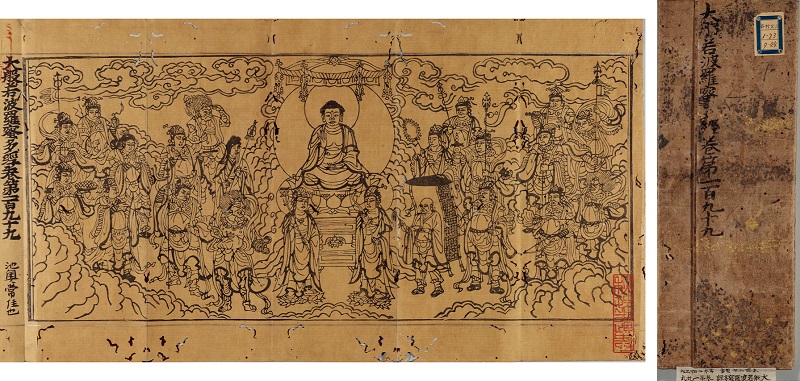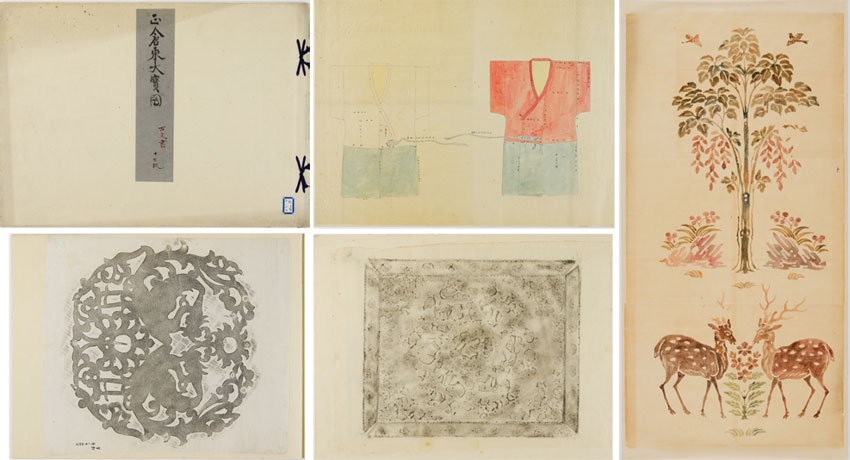Service restored -[Maintenance] Kyoto University Rare Materials Digital Archive (Sep. 15-19)
The Maintenance work was completed (2023/9/19) and the service has been restored.
Kyoto University Rare Materials Digital Archive will suspend its service due to the system maintenance from 6:00 pm on September 15 to 10:00 am on September 19, 2023.
Thank you for your understanding.
[Library Network] All 98 itmes from the Canh Phuoc Collection held by the CSEAS has been newly released.
All 98 itmes from the Canh Phuoc Collection held by the Center for Southeast Asian Studies (CSEAS) has been newly released on the Kyoto University Rare Materials Digital Archive.
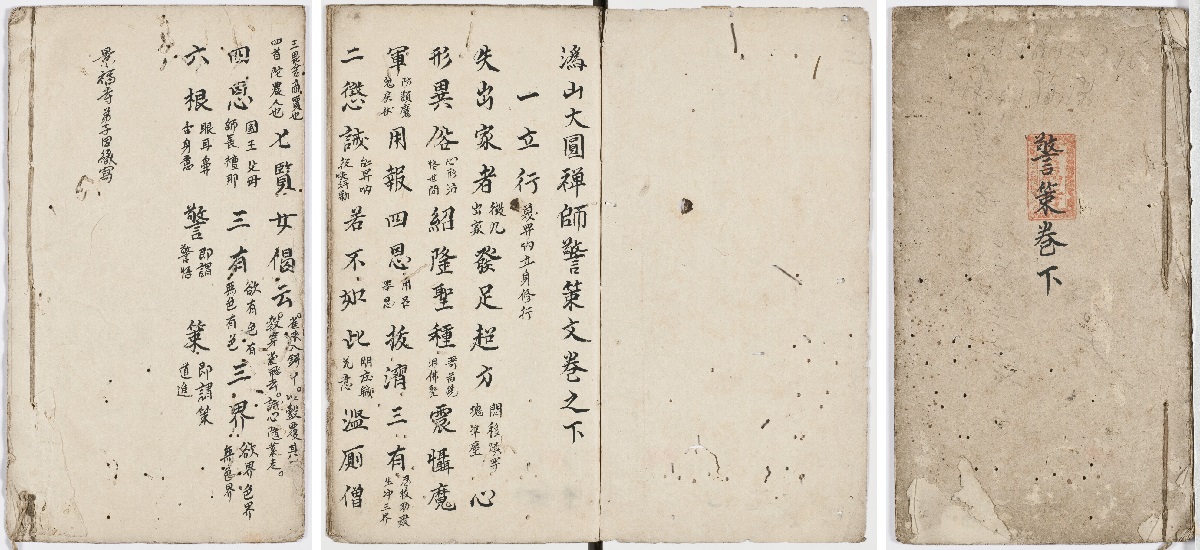
The Canh Phuoc Collection was found at Jing Fu si (Chùa Cảnh Phước in Vietnamese, Wat Samananam Borihan in Thai), which is one of Vietnamese Buddhist temples in Bangkok, Thailand.
The collection consists of 98 pieces of religious material written in Sino-Nom scripts from the late nineteenth to the twentieth century.
The collection is an important materials which tells us the spread of Chinese Mahayana and Vietnamese Buddhism to Southeast Asia.
[Library Network] Important Cultural Property "Dainihonshi Hensan Kiroku" Vol.51-55 (G.S. Letters) Newly Released
The Graduate School of Letters of Kyoto University and the Kyoto University Museum have been carrying out the restoration and digitization of an important cultural property Dainihonshi hensan kiroku held by the Graduate School of Letters since academic year 2017. 214 images of the restored volumes 51-50 are now available in Kyoto University Rare Materials Digital Archive.
■Kyoto University Rare Materials Digital Archive
"Important Cultural Property "Dainihonshi Hensan Kiroku" Vol.51-55 (G.S. Letters) Newly Released "
https://rmda.kulib.kyoto-u.ac.jp/en/news/2023-07-05
▼Important Cultural Property - Dainihonshi hensan kiroku (G.S. Letters)
https://rmda.kulib.kyoto-u.ac.jp/en/collection/dainihonshi
Service restored - [Maintenance] Kyoto University Rare Materials Digital Archive (May 24)
The Maintenance work was completed and the service has been restored. (2023/5/24 13:30)
------------------------------------------------
Service Suspension has been extend to 2 pm. Sorry for the inconvenience. (2023/5/24 13:00)
------------------------------------------------
Kyoto University Rare Materials Digital Archive will suspend its service due to the system maintenance from 11 am to noon on May 24, 2023.
The service will be restored as soon as the maintenance work has been completed.
[Library Network] Kyoto University Rare Materials Digital Archive: 41 titles including “大般若波羅蜜多経” from Tanimura Collection of in Main Library have been newly released
41 titles of rare materials held by the Main Library, including "大般若波羅蜜多経" from the Tanimura Collection and "正倉院東大寺宝図", have been newly released.
As of March 31, 2023, Kyoto University Rare Materials Digital Archive provides 2,008,201 images of 24,098 titles.
Library Network disseminates the university's rare materials to the world through the promotion of OA.
| Record ID | Title | Collection |
| RB00009335 | 大般若波羅蜜多経 巻第38 | Tanimura Collection |
| RB00009337 | 大般若波羅蜜多経 巻第182 | Tanimura Collection |
| RB00009338 | 大般若波羅蜜多経 巻第235 | Tanimura Collection |
| RB00009347 | 大般若波羅蜜多経 巻第123 | Tanimura Collection |
| RB00009348 | 大般若波羅蜜多経 巻第129 | Tanimura Collection |
| RB00009353 | 大般若波羅蜜多経 巻第199 | Tanimura Collection |
| RB00009355 | 大般若波羅蜜多経 巻第90 | Tanimura Collection |
| RB00009356 | 大般若波羅蜜多経 巻第451 | Tanimura Collection |
| RB00009358 | 大般若波羅蜜多経 巻第411 | Tanimura Collection |
| RB00009362 | 大般若波羅蜜多経 巻第84 | Tanimura Collection |
| RB00009413 | 因明正理門論本 | Tanimura Collection |
| RB00009415 | 三論玄義 | Tanimura Collection |
| RB00009479 | 禅苑蒙求 3巻 | Tanimura Collection |
| RB00009498 | 天目中峯和尚広録 巻第20 | Tanimura Collection |
| RB00009529 | 無文印 20巻 | Tanimura Collection |
| RB00009533 | 無門関抄 2巻 | Tanimura Collection |
| RB00009536 | (鎮州)臨済慧照禅師語録 | Tanimura Collection |
| RB00009537 | (鎮州)臨済恵照禅師語録 | Tanimura Collection |
| RB00009580 | 清珠集 | Tanimura Collection |
| RB00009583 | 釈浄土群疑論 7巻 | Tanimura Collection |
| RB00009638 | 大徳国学校論略 | Tanimura Collection |
| RB00009766 | 五経集註 | Tanimura Collection |
| RB00009768 | (欽定)四経 | Tanimura Collection |
| RB00009769 | 七経孟子考文並補遺 200巻 | Tanimura Collection |
| RB00009770 | 易学啓蒙通釈 2巻 | Tanimura Collection |
| RB00009772 | (伊川)易伝 4巻 | Tanimura Collection |
| RB00009776 | (官板)周易本義通釈 12巻 | Tanimura Collection |
| RB00009777 | (官板)周易本義附録纂註 15巻 | Tanimura Collection |
| RB00009779 | 大易緝説 | Tanimura Collection |
| RB00011448 | 朝鮮史略 6巻 | Tanimura Collection |
| RB00011449 | 懲毖録 4巻 | Tanimura Collection |
| RB00011450 | 懲毖録 4巻 | Tanimura Collection |
| RB00011453 | 東史撮要 | Tanimura Collection |
| RB00009784 | 詩集伝通釈 20巻 | Tanimura Collection |
| RB00009786 | 詩集伝名物鈔 8巻 | Tanimura Collection |
| RB00009787 | 詩経類考 巻第26(上下) | Tanimura Collection |
| RB00009789 | 詩序 | Tanimura Collection |
| RB00009790 | 書経集註 6巻 | Tanimura Collection |
| RB00013570 | 正倉院東大寺宝図 | Other Rare Materials in Japanese |
| RB00033838 | 正倉院御寶物之圖 | Non-rare Materials |
| RB00033839 | 正倉院寶物圖 | Non-rare Materials |
[Library Network] Kyoto University Rare Materials Digital Archive: 111 items from the Portrait Collection held by the Kyoto University Museum have been newly released
111 items from the Portrait Collection held by the Kyoto University Museum, including portraits of Tokugawa Ieyasu and that of Sugawara no Michizane, have been newly released.
The Portraits Collection is mainly collected between the late 1910s and 1920s.
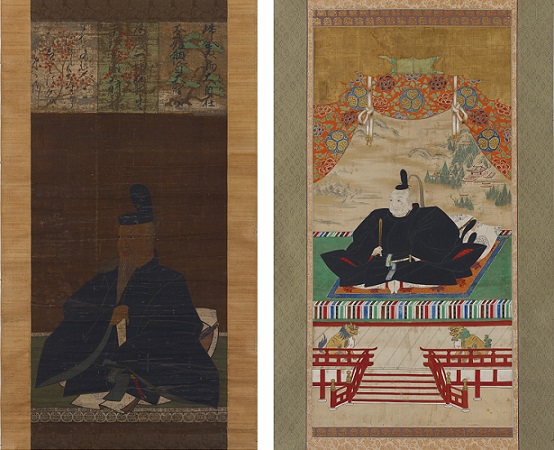
Left: Sugawara no Michizane (tenjin) zō / Right: Tokugawa Ieyasu zō
[Library Network] Kyoto University Rare Materials Digital Archive: Five of oriental maps and star charts have been newly released
Five of oriental maps and star charts held by the Graduate School of Letters and Science have been newly released.
"混弌歴代國都疆理之圖" was established when a manuscript of a map produced in the Ming dynasty in the 16th century was transmitted to the Joseon dynasty, where the title and a map of the Korean peninsula were added. The material held by the Graduate School Letters is thought to be a manuscript of this. It is a valuable material from which the map and the afterword can be clearly read.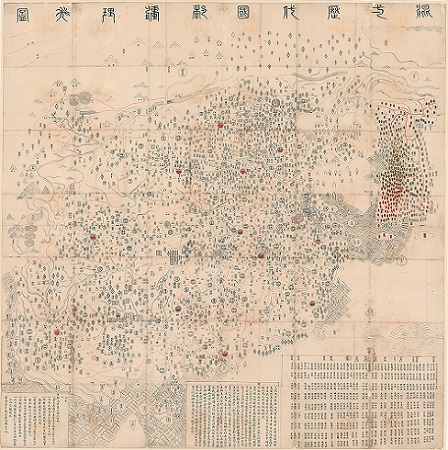
"混弌歴代國都疆理之圖" held by the Graduate School of Letters
“天象列次分野之図” is a stone-engraved star map produced during the reign of King Taejo of the Joseon Dynasty (first engraving), and a facsimile stone monument was produced during the reign of King Sukjong (re-engraving). The materials held by the Graduate School of Letters and the Graduate School of Science are re-engraved rubbings.
The Digital Archive of Rare Materials also has digital images of the first and second engravings in the collection of the Graduate School of Science (Astronomy Dep.). By viewing them side by side, it is possible to see the differences between the first engraving and re-engraving, as well as the differences between the re-engraving rubbings.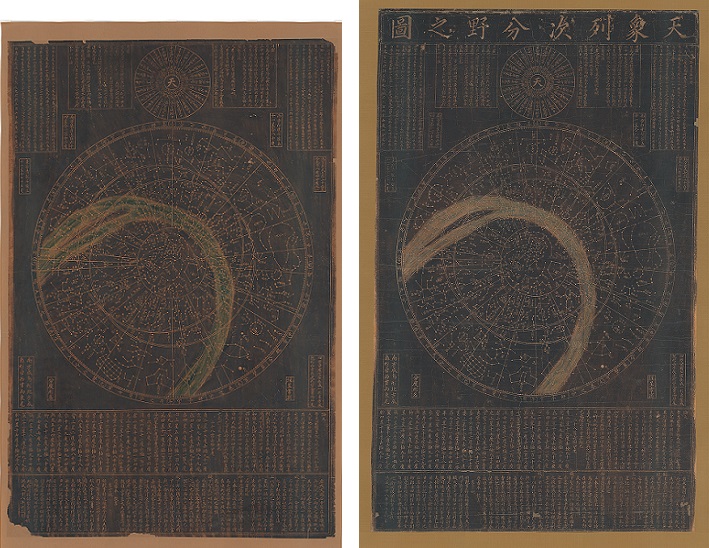
”天象列次分野之図" (Left: held by the Graduate School of Letters / Right: held by the Graduate School of Science)
| Record ID | Title | Collection |
| RB00033993 | [天象列次分野之圖] | Grad. Sch. Letters |
| RB00033994 | 混弌歴代國都疆理之圖 | Grad. Sch. Letters |
| RB00033991 | 天文圖(南宋淳祐天文圖) | Grad. Sch. Science |
| RB00033992 | 天象列次分野之圖 | Grad. Sch. Science |
| RB00033954 | 天文成象 | Grad. Sch. Science |
“天象列次分野之図”, “天文圖” and “天文成象” are from the former collection of Dr. Issei Yamamoto, the first director of the Kwasan Observatory of Kyoto University.
The digitization of the above-mentioned rare materials has been realized thanks to the Kyoto University Rare Materials Digital Archive Fund.
We sincerely extend our appreciation to their generosity, with our determination to continue this digitization project to preserve and make the best use of our rare materials at the same time, which we believe will lead to the promotion of research and culture.
References:
井上充幸「東アジアにおける楊子器図の展開」(藤井讓治, 杉山正明, 金田章裕編『大地の肖像 : 絵図・地図が語る世界』京都大学学術出版会, 2007)pp. 282-297.
https://m.kulib.kyoto-u.ac.jp/webopac/BB02406995
冨田良雄「東洋星図(花山天文台所蔵)」(『静脩』, 51(3), 2014, pp. 4-5.)
http://hdl.handle.net/2433/191072
[Maintenance] Library Network Service temporarily stop on March.9
Due to the server maintenance, Library Network Service will temporarily stop on March. 3. Sorry for inconvenience.
■ Closed Date : March.9 2023 a.m. 8:00 - 8:30
■ Services not available : KULINE, MyKULINE, Online Services(Book Renewal, Reservations, Requests of Interlibrary Loans, etc.)
※Upon completion of the update, services will restart.
※E-journals, Databases, "Kyoto University Research Information Repository(KURENAI)", "Kyoto University Rare Materials Digital Archive" and Library Homepage will be available as usual.
[Library Network] Kyoto University Rare Materials Digital Archive: 212 from Zokyo Shoin Collection have been newly digitized and released
Zokyo Shoin Collection held by the Main Library consists of Buddhist sutras and books collected from the archives of temples by a publisher in Kyoto. Among these, 212 items from Zokyo Shoin-bon have been newly digitized and released.
As of March 6, 2023, Kyoto University Rare Materials Digital Archive provides 1,990,803 images of 23,941 titles.
The digitization of part of Zokyo Shoin Collection is supported by Grants-in-Aid for Scientific Research (JP22HP8002).
[caption id="" align="alignnone" width="927"]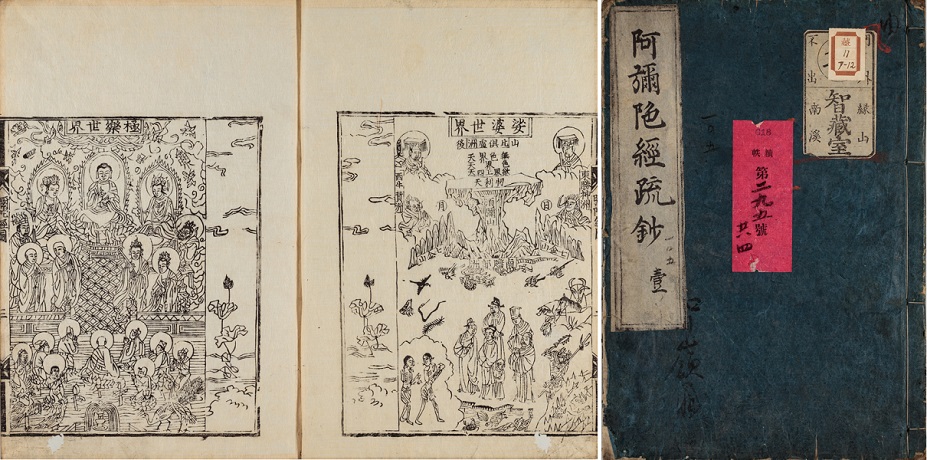 Bussetsu amidakyō shoshō (佛説阿彌陀經疏鈔 四卷)[/caption]
Bussetsu amidakyō shoshō (佛説阿彌陀經疏鈔 四卷)[/caption] [Maintenance] Library Network Service temporarily stop on March.3
Due to the server maintenance, Library Network Service will temporarily stop on March. 3. Sorry for inconvenience.
■ Closed Date : March.3 2023 a.m. 8:00 - 8:30
■ Services not available : KULINE, MyKULINE, Online Services(Book Renewal, Reservations, Requests of Interlibrary Loans, etc.)
※Upon completion of the update, services will restart.
※E-journals, Databases, "Kyoto University Research Information Repository(KURENAI)", "Kyoto University Rare Materials Digital Archive" and Library Homepage will be available as usual.
